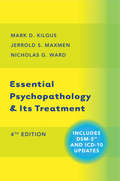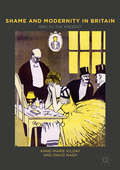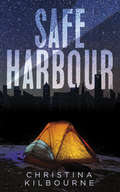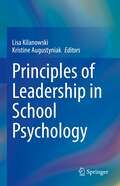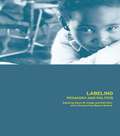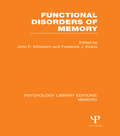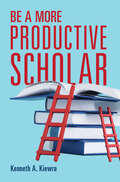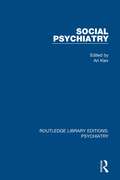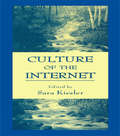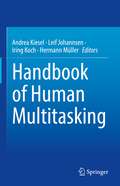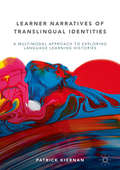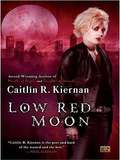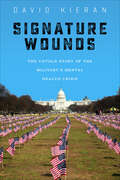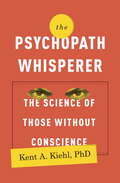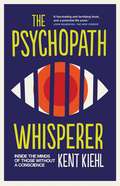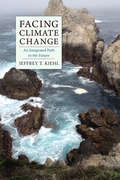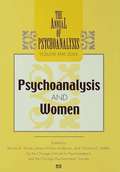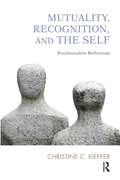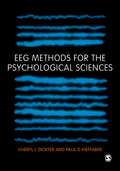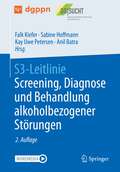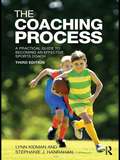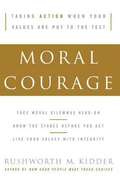- Table View
- List View
Essential Psychopathology & Its Treatment
by Mark D. Kilgus Jerrold S. Maxmen Nicholas G. WardLong considered a leading text on the assessment, diagnosis, and treatmentof psychiatric disorders, this latest revision includes cutting-edge updates inneuroscience, psychopharmacology, and genetics. Geared to resident students inpsychiatry and related disciplines, it makes practical, readable sense of the field.
Shame and Modernity in Britain
by Anne-Marie Kilday David S. NashThis book argues that traditional images and practices associated with shame did not recede with the coming of modern Britain. Following the authors' acclaimed and successful nineteenth century book, Cultures of Shame, this new monograph moves forward to look at shame in the modern era. As such, it investigates how social and cultural expectations in both war and peace, changing attitudes to sexual identities and sexual behaviour, new innovations in media and changing representations of reputation, all became sites for shame's reconstruction, making it thoroughly modern and in tune with twentieth century Britain's expectations. Using a suite of detailed micro-histories, the book examines a wide expanse of twentieth century sites of shame including conceptions of cowardice/conscientious objection during the First World War, fraud and clerical scandal in the interwar years, the shame associated with both abortion and sexual behaviour redefined in different ways as 'deviant', shoplifting in the 1980s and lastly, how homosexuality shifted from 'Coming Out' to embracing 'Pride', finally rediscovering the positivity of shame with the birth of the 'Queer'.
Safe Harbour
by Christina KilbourneAs crazy as her father’s plan sounds, sticking to it is easy for Harbour — until it isn’t. Fourteen-year-old Harbour is living in a tent in a Toronto ravine with her dog, a two-month supply of canned tuna, and an unconventional reading list. She’s not homeless, she tells herself. She’s merely waiting for her home — a thirty-six-foot sailboat — to arrive with her father at the helm. Why should she worry when the clouds give her signs that assure her that she’s safe and protected? When her credit card gets declined, phone contact from her father stops, and summer slips into a frosty fall, Harbour is forced to face reality and accept the help of a homeless teen named Lise to survive on the streets. Lise shows Harbour how to panhandle and navigate the shelter system while trying to unravel Harbour's mysterious past. But if Harbour tells her anything, the consequences could be catastrophic.
Principles of Leadership in School Psychology
by Lisa Kilanowski Kristine AugustyniakThis book provides a long overdue conceptual framework for integrating evidence-based principles of school psychology leadership across NASP (National Association of School Psychologists) domains of practice. It explicates the myriad ways in which school psychologists can and should serve as leaders across the NASP domains, examines the leadership role of school psychologists within each NASP domain, and presents both historical and contemporary contexts of the domains of practice. Key areas of coverage include:Concrete examples of school psychologists as leaders in the field.Spearheading initiatives and service delivery models involving consultation and collaboration.Academic intervention planning.Behavioral and mental health services.Crisis intervention and prevention.Consultation, program evaluation, and ethics of professional practice.The book offers a cogent framework for practitioners and trainers of school psychologists to further integrate principles of leadership into their work in the field. The volume culminates with a discussion of the role of school psychologists as advocates for the practice through legislative and social justice policy.Principles of Leadership in School Psychology is an essential resource for researchers, professors, and graduate students as well as professionals in school and clinical child psychology, educational policy and practice, and social work as well as all interrelated disciplines.
Labeling: Pedagogy and Politics
by Paul Kihn Glenn M. HudakA diverse group of contributors, from the fields of education, psychology, philosophy and cultural studies, explore the social phenomenon of labeling. The authors question the nature of labeling, its contexts and processes, looking in particular at its prescriptive and confining effects. The assumption that labels are neutral and applied neutrally is rejected as the political nature of labeling is revealed.Topics discussed by the contributors include:*the politics of labeling*whiteness as a label for western cultural politics*labeling in institutions*popular culture and labeling*school communities and classrooms and the politics of labeling*labeling and race*sexual labelings*the impact of categorization on our children*labeling in the special education system*immigrants and limited English proficiency groups. Contributors include: Michael Apple, Peter McLaren, Cameron McCarthy and Maxine Greene.
Functional Disorders of Memory (Psychology Library Editions: Memory)
by John F. Kihlstrom Frederick J. EvansOriginally published in 1979, the chapters in this volume summarize the available knowledge pertaining to a variety of functional – as opposed to explicitly organic – amnesias and disruptions of memory. Each chapter is written by an expert, and each author has attempted to integrate his area of inquiry into the contemporary body of theory and research on memory and cognition. Functional memory disorders may prove to be a significant testing ground for current theorizing, and the study of these phenomena may provide insights into memory and cognition that might be obscured in the usual sorts of laboratory investigations. The intent of the volume is to contribute to the development of a more comprehensive account of the processes involved in remembering and forgetting. The reader will find bold new treatments of repression and childhood amnesia, systematic explorations of certain experimental amnesias, and challenging analyses of the anomalies of everyday memory, in this ground-breaking work of the time.
Be a More Productive Scholar
by null Kenneth A. KiewraSome scholars are highly productive. They break new ground and do it again and again. Their names and ideas are ubiquitous in scientific journals and scholarly books. They scoff at 'publish or perish.' To them, it's 'publish and flourish.' But how are they so productive, publishing hundreds of powerful works over their careers? Most graduate students, junior faculty, and even senior faculty have no idea. The methods of the productive are rarely taught and remain a hidden-curriculum. Kenneth A. Kiewra interviewed dozens of productive scholars to uncover the hidden curriculum of scholarly success. Be a More Productive Scholar now reveals those productivity stories and methods by dispensing more than 100 pointers for enhancing professional development and boosting scholarly productivity. Graduate students to seasoned scholars can benefit from this career-guiding advice.
Social Psychiatry: Volume 1 (Routledge Library Editions: Psychiatry #13)
by Ari KievSocial psychiatry is concerned with the interaction of the sociocultural environment and the individual. While recognizing the contribution of psychodynamic factors, it focuses on the impact of the environment on the individual and the reciprocal effect of the individual on the environment. Social psychiatry includes such social problems as migration, acculturation, industrialization, poverty, discrimination, and automation. Originally published in 1970, the articles in this timely collection are in five different areas: definitions and parameters, epidemiology, community psychiatry, social problems, and animal studies. Dr Kiev has provided an introduction to each section that makes clear the significance of each of the contributions, and places them in a broad perspective.
Culture of the Internet
by Sara KieslerAs we begin a new century, the astonishing spread of nationally and internationally accessible computer-based communication networks has touched the imagination of people everywhere. Suddenly, the Internet is in everyday parlance, featured in talk shows, in special business "technology" sections of major newspapers, and on the covers of national magazines. If the Internet is a new world of social behavior it is also a new world for those who study social behavior. This volume is a compendium of essays and research reports representing how researchers are thinking about the social processes of electronic communication and its effects in society. Taken together, the chapters comprise a first gathering of social psychological research on electronic communication and the Internet. The authors of these chapters work in different disciplines and have different goals, research methods, and styles. For some, the emergence and use of new technologies represent a new perspective on social and behavioral processes of longstanding interest in their disciplines. Others want to draw on social science theories to understand technology. A third group holds to a more activist program, seeking guidance through research to improve social interventions using technology in domains such as education, mental health, and work productivity. Each of these goals has influenced the research questions, methods, and inferences of the authors and the "look and feel" of the chapters in this book. Intended primarily for researchers who seek exposure to diverse approaches to studying the human side of electronic communication and the Internet, this volume has three purposes: * to illustrate how scientists are thinking about the social processes and effects of electronic communication; * to encourage research-based contributions to current debates on electronic communication design, applications, and policies; and * to suggest, by example, how studies of electronic communication can contribute to social science itself.
Handbook of Human Multitasking
by Andrea Kiesel Leif Johannsen Iring Koch Hermann MüllerThis handbook on human multitasking provides an integrative overview on simultaneous and sequential multitasking and thus combines theorizing on dual task limitations as well as costs related to task switching. In addition to a wide range of empirical findings and their theoretical integration, the editors provide a number of applications of multitasking, like training, interindividual differences and applied research in traffic and health psychology and music expertise.The book is suitable for people interested in multitasking, that is, for researchers and graduate students of cognitive psychology, movement science, sport psychology, cognitive neuroscience, cognitive and neurological rehabilitation, aging sciences, and broader cognitive science.
Learner Narratives of Translingual Identities: A Multimodal Approach to Exploring Language Learning Histories
by Patrick KiernanThis book addresses translingual identities through an innovative multimodal analysis of the language learning histories of a class of advanced learners of English in Japan who grew up between two or more languages. The author explores both the translingual experiences of those in the classroom and how they use language and gesture when describing their experiences to each other. This approach uses three perspectives: it looks at the worlds and identities the interviewees construct for themselves; at their interpersonal communication; and at the way they frame their experience. Finally, it offers some lessons based on the observations of the class which reveal the values they share and the key to their success as language learners. It will appeal to applied linguistic and educational researchers, particularly those with an interest in narrative approaches to exploring educational contexts, as well as language educators and policy makers interested in gaining a learner perspective on language learning.
Low Red Moon
by Caitlin R. KiernanSeveral years after the events in Threshold, Chance and Deacon have married. They're looking ahead to the future, trying to put the past behind them. But new nightmares await them as a woman with a need for violence enters their lives. And something even worse has followed her...
The Sickness Unto Death: A Christian Psychological Exposition for Edification and Awakening by AntiI-Climacus,
by KierkegaardKierkegaard explores the concept of "despair," alerting readers to the diversity of ways in which they may be described as living in this state of bleak abandonment—including some that may seem just the opposite—and offering a much-discussed formula for the eradication of despair.
Signature Wounds: The Untold Story of the Military's Mental Health Crisis
by David KieranThe surprising story of the Army’s efforts to combat PTSD and traumatic brain injury The wars in Iraq and Afghanistan have taken a tremendous toll on the mental health of our troops. In 2005, then-Senator Barack Obama took to the Senate floor to tell his colleagues that “many of our injured soldiers are returning from Iraq with traumatic brain injury,” which doctors were calling the “signature wound” of the Iraq War. Alarming stories of veterans taking their own lives raised a host of vital questions: Why hadn’t the military been better prepared to treat post-traumatic stress disorder (PTSD) and traumatic brain injury (TBI)? Why were troops being denied care and sent back to Iraq? Why weren’t the Army and the VA doing more to address these issues? Drawing on previously unreleased documents and oral histories, David Kieran tells the broad and nuanced story of the Army’s efforts to understand and address these issues, challenging the popular media view that the Iraq War was mismanaged by a callous military unwilling to address the human toll of the wars. The story of mental health during this war is the story of how different groups—soldiers, veterans and their families, anti-war politicians, researchers and clinicians, and military leaders—approached these issues from different perspectives and with different agendas. It is the story of how the advancement of medical knowledge moves at a different pace than the needs of an Army at war, and it is the story of how medical conditions intersect with larger political questions about militarism and foreign policy. This book shows how PTSD, TBI, and suicide became the signature wounds of the wars in Iraq and Afghanistan, how they prompted change within the Army itself, and how mental health became a factor in the debates about the impact of these conflicts on US culture.
The Psychopath Whisperer: The Science of Those Without Conscience
by Kent A. KiehlA compelling journey into the science and behavior of psychopaths, written by the leading scientist in the field of criminal psychopathy.We know of psychopaths from chilling headlines and stories in the news and movies--from Ted Bundy and John Wayne Gacy, to Hannibal Lecter and Dexter Morgan. As Dr. Kent Kiehl shows, psychopaths can be identified by a checklist of symptoms that includes pathological lying; lack of empathy, guilt, and remorse; grandiose sense of self-worth; manipulation; and failure to accept one's actions. But why do psychopaths behave the way they do? Is it the result of their environment-- how they were raised--or is there a genetic component to their lack of conscience? This is the question Kiehl, a protégé of famed psychopath researcher Dr. Robert Hare, was determined to answer as he began his career twenty years ago. To aid in his quest to unravel the psychopathic mind, Kiehl created the first mobile functional MRI scanner to study psychopaths in prison populations. The brains of more than five hundred psychopaths and three thousand other offenders have been scanned by Kiehl's laboratory--the world's largest forensic neuroscience repository of its kind. Over the course of The Psychopath Whisperer, we follow the scientific bread crumbs that Kiehl uncovered to show that the key brain structures that correspond with emotional engagement and reactions are diminished in psychopaths, offering new clues to how to predict and treat the disorder. In The Psychopath Whisperer, Kiehl describes in fascinating detail his years working with psychopaths and studying their thought processes-- from the remorseless serial killers he meets with behind bars to children whose behavior and personality traits exhibit the early warning signs of psychopathy. Less than 1 percent of the general population meets the criteria for psychopathy. But psychopaths account for a vastly outsized proportion of violent crimes. And as Kiehl shows, many who aren't psychopaths exhibit some of the behaviors and traits associated with the condition. What do you do if you discover your roommate, or boss, or the person you are dating has traits that define a psychopath? And what does having a diminished limbic region of the brain mean for how the legal system approaches crimes committed by psychopaths? A compelling narrative of cutting-edge science, The Psychopath Whisperer will open your eyes on a fascinating but little understood world, with startling implications for society, the law, and our personal lives.From the Hardcover edition.
The Psychopath Whisperer: Inside the Minds of Those Without a Conscience
by Kent KiehlA chilling and provocative scientific dissection of the psychopath's brain Fact: A psychopath is 6 times more likely to commit a new crime after release from prison. Fact: Some forms of group therapy make psychopaths more likely to commit a new crime compared to no treatment at all. Fact: A psychopath is born every 47 seconds. Kent Kiehl is the 'Psychopath Whisperer', a neuroscientist who has dedicated his career to understanding what makes a mind turn criminal. Are psychopaths 'evil' and untreatable, or do they suffer from a mental illness comparable to schizophrenia or epilespsy? Do they - do we - have free will? Based on breathtaking research, including personality surveys and brain imaging scans of thousands of criminals, Kiehl pinpoints the biological machinery of psychopathy - and offers a radical new perspective on identifying & treating the psychopaths in our midst.
Facing Climate Change: An Integrated Path to the Future
by Jeffrey T. KiehlJeffrey T. Kiehl is a senior scientist at the National Center for Atmospheric Research and a fellow of the American Geophysical Union and the American Meteorological Society. He is a recipient of the AGU Climate Communication Prize. He is also a senior Jungian analyst with the C. G. Jung Institute of Colorado, the Inter-Regional Society of Jungian Analysts, and the International Association for Analytical Psychology.
Facing Climate Change: An Integrated Path to the Future
by Jeffrey KiehlFacing Climate Change explains why people refuse to accept evidence of a warming planet and shows how to move past partisanship to reach a consensus for action. A climate scientist and licensed Jungian analyst, Jeffrey T. Kiehl examines the psychological phenomena that twist our relationship to the natural world and their role in shaping the cultural beliefs that distance us further from nature. He also accounts for the emotions triggered by the lived experience of climate change and the feelings of fear and loss they inspire, which lead us to deny the reality of our warming planet.But it is not too late. By evaluating our way of being, Kiehl unleashes a potential human emotional understanding that can reform our behavior and help protect the Earth. Kiehl dives deep into the human brain's psychological structures and human spirituality's imaginative power, mining promising resources for creating a healthier connection to the environment—and one another. Facing Climate Change is as concerned with repairing our social and political fractures as it is with reestablishing our ties to the world, teaching us to push past partisanship and unite around the shared attributes that are key to our survival. Kiehl encourages policy makers and activists to appeal to our interdependence as a global society, extracting politics from the process and making decisions about our climate future that are substantial and sustaining.
The Annual of Psychoanalysis, V. 32: Psychoanalysis and Women
by Christine C. Kieffer Jerome A. Winer James William AndersonPsychoanalysis and Women, Volume 32 of The Annual of Psychoanalysis, is a stunning reprise on theoretical, developmental, and clinical issues that have engaged analysts from Freud on. It begins with clinical contributions by Joyce McDougall and Lynne Layton, two theorists at the forefront of clinical work with women; Jessica Benjamin, Julia Kristeva, and Ethel Spector Person, from their respective vantage points, all engage the issue of passivity, which Freud tended to equate with femininity. Employing a self-psychological framework, Christine Kieffer returns to the Oedipus complex and sheds new light on the typically Pyrrhic oedipal victory of little girls. Section III broadens the historical context of contemporary theorizing about women by offering the personal reminiscences of Nancy Chodorow, Carol Gilligan, Brenda Solomon, and Malkah Notman. A final section, dedicated to "women who shared psychoanalysis," features historical essays on Ida Bauer (Freud's "Dora"), Anna Freud, Dorothy Burlingham, Edith Jacobson, and Therese Benedek, along with Linda Hopkins's revealing interview of Marion Milner. Of special note is Marian Tolpin's examination of three women - Bauer, Helene Deutch, and Anna Freud - who helped shape Freud's notion of the "femail castration complex," and Elisabeth Young-Bruehl's exploration of how two women - Anna Freud and Dorothy Burlingham - developed parent-infant observation. Psychoanalysis and Women is an extraordinary chronicle of the distance traveled since Freud characterized women's sexual life as "the dark continent." The contributors vitalize a half century of theory with the lessons of biography, and they broaden clinical sensibilities by drawing on recent developmental, gender-related, and socio-psychological research. In doing so, they attest to the ongoing reconfiguration of Freud's dark continent and show the psychoanalytic psychology of women to be very much a revolution in progress.
Mutuality, Recognition, and the Self: Psychoanalytic Reflections
by Christine C. KiefferThis book examines emerging trends in contemporary psychoanalytic theory and practice, highlighting inter-subjective and relational models of the mind. The author presents vivid and extended clinical vignettes that demonstrate the analyst's use of the self in building clinical momentum and continued development. The author highlights the importance of mutuality and recognition in the development of the self, illustrating the impact of family, the larger group context, and the contribution of the analytic encounter. This book is divided into three sections: First, the contribution of family to development, including some relatively neglected topics, such as the importance of fathers in female development, the role of siblings, the experience of 'only' children or singletons in the family, and the impact of the extended family (including grandparents) upon the individual. A second section examines the influence of unconscious group processes upon individual development and functioning, and includes papers that highlight the contribution of group psychotherapy as a form of treatment.
EEG Methods for the Psychological Sciences (The\sage Library Of Methods In Social And Personality Psychology Ser.)
by Paul D Kieffaber Cheryl L Dickter"A unique and important resource, full of critical practical knowledge and technical details made readily accessible." - Tiffany Ito, University of Colorado at Boulder "A comprehensive and engaging guide to EEG methods in social neuroscience; Dickter and Kiefabber offer practical details for conducting EEG research in a social/personality lab, with a broad perspective on how neuroscience can inform psychology. This is a unique and invaluable resource - a must-have for scientists interested in the social brain." - David M. Amodio, New York University Electroencephalography (EEG) has seen a dramatic increase in application as a research tool in the psychological sciences in recent years. This book provides an introduction to the technology and techniques of EEG in the context of social and cognitive neuroscience research that will appeal to investigators (students or researchers) wishing to broaden their research aims to include EEG, and to those already using EEG but wishing to expand their analytic repertoire. It can also serve as a textbook for a postgraduate course or upper-level undergraduate course in any area of behavioural neuroscience. The book provides an introduction to the theory, technology, and techniques of EEG data analysis along with the practical skills required to engage this popular technology. Beginning with a background in the neural origins and physical principles involved in recording EEG, readers will also find discussions of practical considerations regarding the recording of EEG in humans as well as tips for the configuration of an EEG laboratory. The analytic methods covered include event-related brain potentials (ERPs), spectral asymmetry, and time-frequency analyses. A conceptual background and review of domain-specific applications of the method is provided for each type of analysis. There's also comprehensive guided analysis for each analytic method that includes tutorial-style instruction and sample datasets. This book is perfect for advanced students and researchers in the psychological sciences and related disciplines who are using EEG in their research.
S3-Leitlinie Screening, Diagnose und Behandlung alkoholbezogener Störungen
by Falk Kiefer Sabine Hoffmann Kay Uwe Petersen Anil BatraDas Buch liefert – unter Einbeziehung der Erkenntnisse aus der aktuellen Forschung – detaillierte Leitlinien zur Früherkennung von Alkoholproblemen und zur optimalen Behandlung von betroffenen Personen. Für die 2020 aktualisierte Auflage wurden alle Kapitel hinsichtlich neuer Forschungsergebnisse und aktueller Literatur überprüft und die Empfehlungen überarbeitet.Die Empfehlungen richten sich an ÄrztInnen und PsychologInnen in Klinik und Praxis, an Mitarbeitende in Reha-Einrichtungen und Beratungsstellen, sowie an Betroffene und deren Angehörige. Die Leitlinie bildet die Grundlage für eine evidenzbasierte Behandlung und soll einen leichteren Zugang zum umfangreichen Hilfesystem ermöglichen. Die wichtigsten Inhalte auf einen Blick:Empfehlungen zu Screening, Case Finding und Diagnostik von alkoholbezogenen StörungenBehandlungsempfehlungen für Personen mit alkoholbezogenen Störungen in im akuten und postakuten SettingEmpfehlungen für verschiedene Gruppen der GesellschaftBesonderer Fokus auf die deutsche Versorgungslandschaft
The Coaching Process: A Practical Guide to Becoming an Effective Sports Coach
by Lynn Kidman Stephanie J. HanrahanIn this fresh and engaging introduction to sports coaching, Lynn Kidman and Stephanie Hanrahan guide students through the coaching process. Focusing on the practical aspects of sports coaching, the book helps students to develop their basic technical skills as well as strategies for working with individual and team athletes, and to plan and implement effective coaching sessions. The book develops an "athlete-centred approach" to sports coaching, by which athletes take ownership of their learning, in turn strengthening their abilities to retain key skills and to make effective decisions during competition. Useful pedagogical features in each chapter, such as real life case studies, activities, self-reflection questions, and summaries of current research and best practice, encourage reflective practice and help student coaches to develop and extend their coaching techniques and philosophies. The Coaching Process is invaluable reading for any student starting a sports coaching course at college or university, and for any coach working with athletes or children in sport who wants to improve their practical skills.
Moral Courage
by Rushworth M. KidderIn a book rich with examples, Rushworth Kidder reveals that moral courage is the bridge between talking ethics and doing ethics. He explains that the courage to act is found at the intersection of three elements: action based on core values, awareness of the risks, and a willingness to endure necessary hardship. He demonstrates the benefits of ethical action to the individual and to society -- and the severe consequences that can result from remaining morally dormant.
